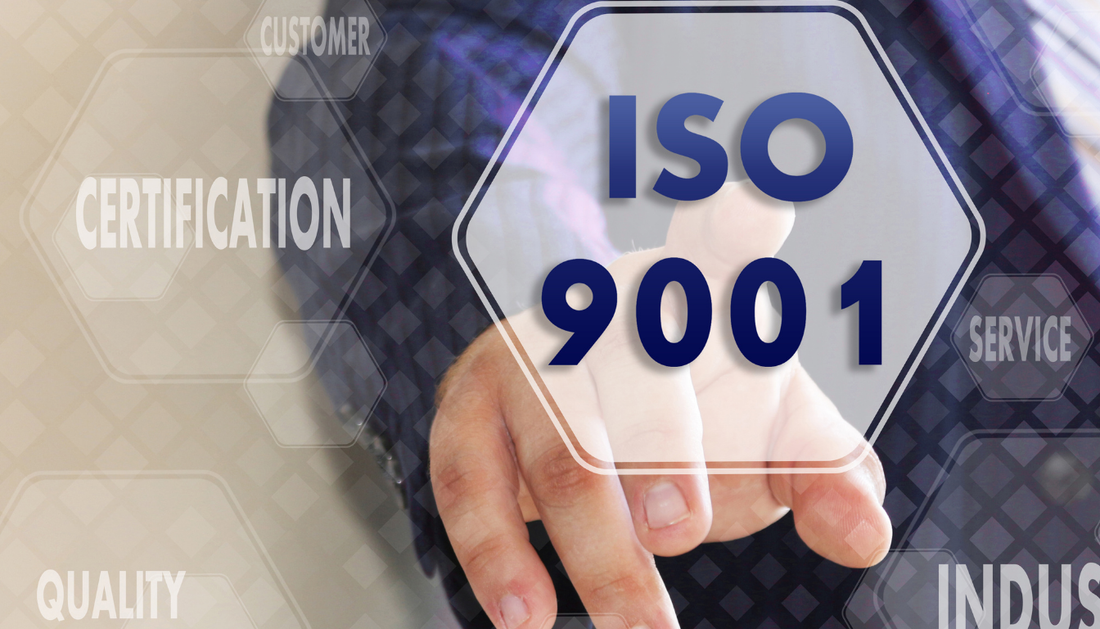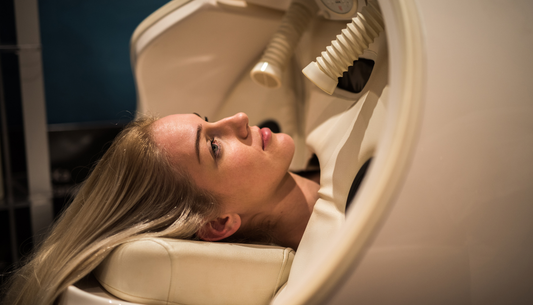
Top Certifications to Check Before Buying a Hyperbaric Oxygen Chamber
Buying hyperbaric chambers is more than just looking at price or features. It's about safety. This guide will show you the key marks, audits, and credentials to look for in the U.S. It helps you pick the right hyperbaric chamber without any doubts.

First, check the device and its maker. Look for ISO 9001 for quality management and ASME PVHO-1 for pressure vessels. Also, check for UL safety listing and the CE mark for market access. Each label should have a valid certificate number and a current manufacturer name. This is the first step in checking if a hyperbaric chamber is certified and real.
People are as important as the equipment. Make sure the operators have Certified Hyperbaric Technologist credentials from the National Board of Diving & Hyperbaric Medical Technology. Also, check for Certified Hyperbaric Specialist and Hyperbaric Safety Director training. These credentials ensure daily practice follows safety protocols and emergency plans.
Program integrity is also key. The Undersea & Hyperbaric Medical Society requires centers to report major changes, like a move or merger. Missing a report can lead to accreditation lapsing. This can trigger an interim survey and show gaps in risk management. For buyers, it's a clear sign to pause and check again.
Pressure ratings affect training needs. Chambers over 1.5 ATA require advanced operator training and doctor support to lower risks. A good clinic will have a careful intake process, medical screening, and emergency plans. This shows they combine certification with real-world safety. That's how to confidently choose a hyperbaric chamber and use this guide before making a deal.
Why Certification Matters in Hyperbaric Oxygen Therapy
Certification keeps therapy safe and results consistent. Choosing certified hyperbaric chambers with verified training reduces errors and protects patients. This is key for smart buying in the United States.

Safety, efficacy, and risk management in HBOT purchasing
Just checking devices isn't enough. Hyperbaric chamber certification connects engineering standards to real-world use. This ensures safety and effective treatment.
When looking for authentic hyperbaric chambers, check pressure ratings and commissioning records. The risk level changes with the pressure, so training needs vary. These steps help find reliable chambers.
How staff credentials (CHT, CHS, Safety Director) complement device certifications
People are key. CHT and CHS show staff know how to use the equipment safely. A Hyperbaric Safety Director leads in risk management and emergency response.
With the right staff, certified hyperbaric chambers can handle higher pressures and follow strict safety rules. This makes authentic hyperbaric chambers reliable for treatment.
Screening, protocols, and emergency preparedness in certified programs
Good intake is essential. A doctor-led screening catches any issues and sets the treatment plan. Written protocols ensure the chamber is used correctly.
Emergency plans are also vital. Teams practice for emergencies and document each drill. For buyers, these steps show the equipment and team are ready for patients.
Core Device and Manufacturing Standards to Verify for Buying Hyperbaric Chambers
Before you buy, check the maker's details, current certificates, and what they cover. Make sure the hyperbaric chamber's certification matches the one you want to buy.
Ask for originals, not screenshots. Make sure the names, addresses, and numbers on the certificate match the actual maker, not a middleman.

ISO 9001 quality management in hyperbaric chambers
ISO 9001 shows a maker follows strict rules from start to finish. Check the certificate is current and for the real maker. Look at the audit dates and what the certificate covers, like design and making of HBOT systems.
Get a copy with the registrar’s mark, like BSI, TÜV SÜD, or SGS. Make sure the site listed is where the chamber was made.
ISO 13485 certified mild hyperbaric chamber manufacturing controls
An iso 13485 certified mild hyperbaric chamber shows it's made for medical use. Look for design controls, risk management, and traceability. The scope should cover making and after-sales for the specific pressure class.
Ask for a summary of the device master record and proof of supplier checks, calibration, and complaint handling for the chamber model.
CE approved home hyperbaric oxygen therapy device requirements for market access
A ce approved home hyperbaric oxygen therapy device meets EU safety rules. Check the CE Declaration of Conformity for the maker's name, rules followed, and standards used.
Don't think CE means it's clinically approved. CE lets it be sold in the EU; it doesn't replace checks on the whole system.
ASME PVHO-1 considerations for pressure vessels in HBOT systems
ASME PVHO-1 covers design, materials, and tests for pressure vessels for people. For steel or acrylic chambers, look for hydrostatic tests, material certificates, and third-party inspection reports that match the serial number.
For fabric or mild units, check the rated pressure, safety valves, and engineering files. These should show safety levels for the intended use.
| Standard/Mark | What to Verify | Why It Matters | Buyer Tip |
|---|---|---|---|
| ISO 9001 | Active certificate, scope covering design/manufacture, registrar validity | Ensures process control and continuous improvement | Match certificate holder to the factory producing the chamber |
| ISO 13485 | Design controls, risk files, traceability for the specific model | Medical device-grade quality system for HBOT | Request audit summaries and lot trace records |
| CE Marking | Declaration of Conformity, applied standards, notified body (if applicable) | Legal market access in the EU for home and clinic devices | Confirm device model and manufacturer match all documents |
| ASME PVHO-1 | Design calculations, material certs, hydrostatic test reports | Structural integrity for occupied pressure vessels | Verify serial-numbered records align with the chamber |
| Electrical Safety (e.g., IEC 60601-1) | Test reports and listing for the exact configuration | Reduces shock, fire, and EMI risks | Check for accredited lab marks and complete test scopes |
Spread out the keywords naturally in your requests for proof: iso 9001 quality management in hyperbaric chambers, iso 13485 certified mild hyperbaric chamber files, a ce approved home hyperbaric oxygen therapy device declaration, and clear hyperbaric chamber certification records that tie to the serial number you intend to buy.
A Buyer’s Guide to Identifying Certified and Authentic Hyperbaric Chambers
When looking for a hyperbaric chamber, start with proof, not promises. Look for clear evidence that the device and program meet recognized standards. Use these tips to separate marketing spin from verified compliance and confirm the authenticity of the hyperbaric chambers you are considering.
Recognizing real vs. misleading claims in hyperbaric chamber certification
Be wary of loose use of logos. CE marks show market access in the EU, not clinical accreditation. FDA graphics should not imply agency endorsement unless a device has the proper clearance or approval category.
Some sellers cite ISO certificates that belong to suppliers. Insist on the manufacturer’s current ISO 9001 and ISO 13485 certificates. Make sure the legal company name, scope statement, and product family on each certificate match.
Be cautious with phrases like fcc compliant portable hyperbaric chamber. If the unit includes electronics that emit radiofrequency, request the supporting test reports. These tips help filter claims before you commit.
How to check certification databases and documentation validity
Confirm staff credentials through the issuing bodies. For example, verify CHT through the National Board of Diving & Hyperbaric Medical Technology (NBDHMT). Check certificate numbers, expiration dates, and renewal status.
Review every document for official logos, valid scope, and current dates. If the certificate references a specific model line, ensure it matches the unit offered. When in doubt, contact the issuer to confirm status.
For program accreditation, confirm the facility’s current listing and whether recent changes were reported as required. These steps belong in A Buyer’s Guide to Identifying Certified and Authentic Hyperbaric Chambers and align with practical tips for buying hyperbaric chambers.
Aligning pressure ratings (1.3–1.5 ATA vs. up to 2.0 ATA) with required operator qualifications
Match device pressure to operator training. Mild systems at 1.3–1.5 ATA can be appropriate with screening and defined protocols. Units operating up to 2.0 ATA demand specialized training, expert commissioning, and ongoing oversight.
Confirm the operator’s qualifications and documented competencies for the pressure class. Authentic hyperbaric chambers should come with clear operating limits, maintenance schedules, and training records tied to those limits.
When evaluating a claimed fcc compliant portable hyperbaric chamber that includes compressors, intercoms, or monitors, verify both pressure and electronics documentation together to ensure a coherent safety profile.
Operational safeguards: intake, medical safety screening, and documented procedures
Require a structured intake process and medical safety screening to flag contraindications. Access to physician support should be defined, not left to general advice. This is central to tips for buying hyperbaric chambers that protect users.
Review written procedures for emergency response, fire safety, and oxygen handling. Ask for recent maintenance logs, calibration dates, and training records. Authentic hyperbaric chambers pair certified hardware with disciplined operations.
A Buyer’s Guide to Identifying Certified and Authentic Hyperbaric Chambers also includes checking that any claim of a fcc compliant portable hyperbaric chamber is backed by complete test files when electronics are present, along with current ISO certificates and verifiable staff credentials.
| What to Verify | How to Check | Red Flags | Why It Matters | ISO 9001 / ISO 13485 |
|---|---|---|---|---|
| Match company name, scope, certificate number, and expiration on the certificate to the seller and device family. | Supplier’s certificate used for a different entity; expired dates; mismatched scope. | Confirms quality management and medical device controls for authentic hyperbaric chambers. | ||
| CE / FDA Claims | ||||
| Request declaration of conformity or FDA clearance letter tied to the exact model. | Generic logo use; no model-specific documents; vague “approved” language. | Prevents misleading claims and supports A Buyer’s Guide to Identifying Certified and Authentic Hyperbaric Chambers. | ||
| Pressure Rating | ||||
| Verify 1.3–1.5 ATA vs. up to 2.0 ATA in manuals and labels; confirm operator training for the class. | Pressure not stated; inconsistent labels; no operator qualifications. | Aligns device capability with risk profile and required competencies. | ||
| Staff Credentials | ||||
| Check NBDHMT database for CHT; confirm Safety Director and CHS training are current. | Names not listed; lapsed credentials; unverifiable certificates. | Ensures competent operation and oversight within certified programs. | ||
| Operational Safeguards | ||||
| Review intake forms, medical screening protocols, emergency and fire procedures, maintenance logs. | “Consult your doctor” with no structured process; missing logs; no drills. | Demonstrates a working safety system, not just equipment on a shelf. | ||
| Electrical / EMC Evidence | ||||
| For units with electronics, request reports supporting a fcc compliant portable hyperbaric chamber claim. | No test reports; unrelated certificates; incomplete documentation set. | Validates electromagnetic compatibility and safe operation around RF sources. | ||
| Model Traceability | ||||
| Confirm serial numbers, build dates, and manuals match the device shipped. | Missing serials; altered labels; outdated manuals. | Supports chain-of-custody and service accuracy in tips for buying hyperbaric chambers. |
Clinical and Operator Credentials That Protect Patients
Patient safety in hyperbaric medicine begins with verified people and programs. A hyperbaric chamber buyer's guide should look for Certified Hyperbaric Technologist (CHT) status from the National Board of Diving & Hyperbaric Medical Technology. This confirms skill with equipment, protocols, and emergency response.
Advanced roles are important. Certified Hyperbaric Specialist (CHS) and Hyperbaric Safety Director credentials show deeper knowledge. Staff education should cover wound healing science, oxygen toxicity, and emergency drills.
Accredited programs keep standards current. Under the Undersea & Hyperbaric Medical Society, accredited centers must report major changes. Buyers should confirm that accreditation remains active and reflects any recent updates.
Sound screening prevents harm. Every patient needs a formal intake, physician review, and documentation of contraindications. Claims of “no screening needed” should raise red flags.
Pressure capability sets the bar for training. Systems rated 1.3–1.5 ATA can be run within structured protocols. Units operating up to 2.0 ATA require specialized competencies.
Documentation proves readiness. Ask for written policies, maintenance logs, emergency drill records, and evidence of continuing education. When these elements align with certified hyperbaric chambers, a medical grade hyperbaric chamber with ai safety features can be operated safely.
Why Kingshare’s Certified Hyperbaric Chambers Stand Out in the United States
Kingshare focuses on quality for U.S. buyers who want proof. Their systems meet ISO 9001 for quality and ISO 13485 for medical devices. They also follow EU CE and U.S. FCC rules for safety.
Starting in 2020, Kingshare has helped over 30 countries. They offer reliable support and parts. Buyers get full reports to check the chambers before buying.
Kingshare makes sure everything runs smoothly. They have clear plans for starting up and training. This makes it easier to get ready and start using the chambers.
Choosing a hyperbaric chamber is easier with Kingshare. They offer top-quality chambers with clear records. This helps teams meet safety and effectiveness goals.
FAQ
What are the top certifications to check before buying a hyperbaric oxygen chamber in the U.S.?
Look for ISO 9001 for quality management and ISO 13485 for medical device controls. Also, check for ASME PVHO-1 for pressure vessels and electrical safety testing. If the device will be sold in the EU, confirm CE marking. For devices with electronics, check for FCC compliance.

